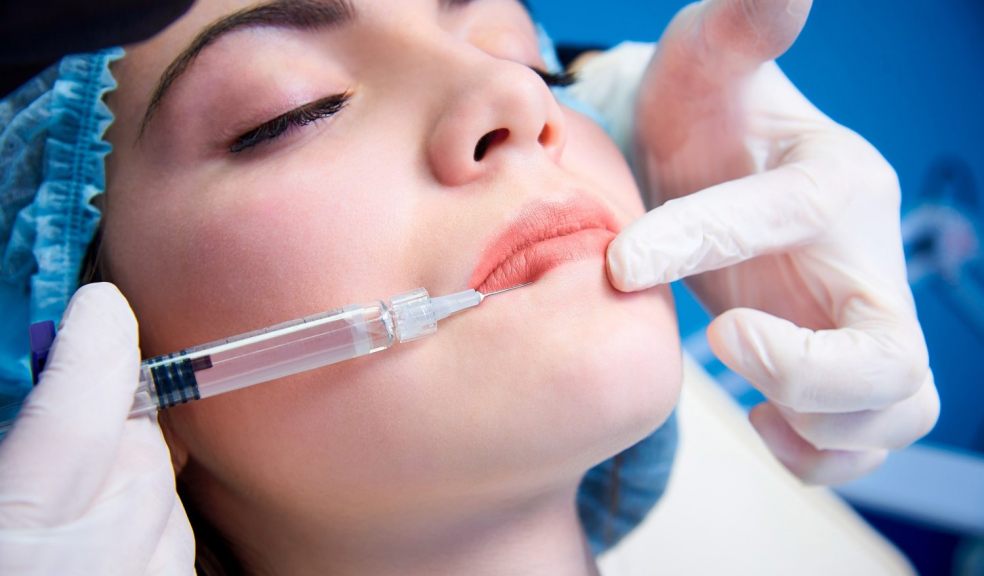
Are injectables becoming the go-to beauty treatment for millennials?
Not everyone is willing to go under the knife and have plastic surgery, but it seems there are lots of people who want a bit of a boost when it comes to their appearance.
This is where injectables come in: Needles full of fillers, Botox or even your own fat, that can change the shape of your face. Considering the Instagram trend for plump lips and defined cheekbones, it's perhaps no surprise young women feel pressure to go under the needle.
Opinions are changing to match this; the Allergan 360 Degree Aesthetics Report found 82% of consumers around the world aged 21-35 thought injectables were socially acceptable. It also discovered that millennials worldwide (21-35) were 33% more likely to consider preventative treatments compared to older groups – which may be to do with how prevalent these procedures are on Instagram and reality TV shows.
There's also a growing trend of injectables aimed squarely at millennials – such as preventative Botox, which uses smaller doses in the areas which age the quickest. Instead of correcting existing wrinkles and lines, it's meant to slow them down before they even happen.
Woman should be able to do whatever they like with their bodies, whether it's plastic surgery, injectables or nothing at all – it's their own choice. However, it does seem a bit strange that injectables are on their way to becoming almost as normal and unremarkable as putting on make-up – it is still, after all, procedures involving needles.
The increasing popularity could be down to how much easier it's becoming to access. Last summer high street chain Superdrug rolled out a new beauty treatment service for Botox and lip fillers instore. Only those who can prove they are 25 or over can get the treatment, but many are still worried that this sends a damaging message that mid-twenties is the age to start worrying about wrinkles. It also speaks to the future of injectables: Will they become as easy as getting any old beauty treatment, like a manicure or facial?
Famous figures have helped popularise the perfect Instagram look of full lips, high cheekbones and smooth skin. Kylie Jenner has been open about the procedures she's had done, telling Paper: "People think I fully went under the knife and completely reconstructed my face, which is completely false. I'm terrified! I would never. They don't understand what good hair and makeup and, like, fillers, can really do."
We asked the experts what physical and mental risks might lie behind this rise in injectables...
The physical risks
Our social media feeds are often populated with horror stories of fillers gone wrong, so we asked consultant dermatologist, Dr Anton Alexandroff from BMI The Manor Hospital, what people actually need to consider with injectables.
He describes Botox as "very safe because it doesn't last long". He says: "It lasts between four and six months, so if it is injected in the wrong place or in the wrong way, the side effect wears out." Of course, it also means that if you want the effect long term, you have to keep getting Botox done – and the NHS estimate it costs between £100-£350 a session.
When it comes to lip fillers, there are semi-permanent and there are permanent. Alexandroff says: "Permanent fillers are a little bit more risky, because if anything goes wrong with them, it's more difficult to put it right. They're generally very safe – otherwise it wouldn't be done – but occasionally there could be an inflammatory reaction or infection."
As with Botox, semi-permanent fillers wear off within four to six months. The things that can go wrong include inflammatory reactions or fungal infections. "Generally they are quite safe – but obviously not as safe as using moisturiser," Alexandroff says, of how ubiquitous injectables have become.
He compares it to getting a tattoo – something which is common and low-risk, but "people obviously have to know that the risks do exist and things can go wrong". When needles are involved, there is the possibility for infection.
Perhaps the most important thing to keep in mind with these procedures is the practitioner you choose. Alexandroff stresses how careful you need to be, saying you need to trust your practitioner "to avoid contamination and also to make sure the results are what you expected".
Unfortunately, he adds that the industry "is not very well regulated at all" and "certifications do exist but they're quite easy to obtain". Instead, he says you should choose a practitioner who is a medical professional (not just a beautician) who has a lot of experience, and ask other patients what they think of the results of their procedures.
A report compiled by Save Face, a register of accredited practitioners who do non-surgical cosmetic treatments, found that between 2017 and 2018, 934 patients in the UK complained about unregistered practitioners, and 387 of these had to have corrective procedures to fix their first procedure.
The NHS also list the British Association of Aesthetic Plastic Surgeons, the Joint Council for Cosmetic Practitioners, and the British Association of Cosmetic Nurses as registers, so check to find qualified practitioners.
The mental impact
Even if you choose the right doctor and the procedure is safe, it's worth considering the mental impact, as well as the physical. Dr Elena Touroni, consultant psychologist and co-founder of The Chelsea Psychology Clinic, talks about the pressure to look perfect, and that it's amplified by social media.
"When we are flooded with images in this way, it's undoubtedly going to have an influence on our view of the world, and also our self-perception," she says. "People have a tendency to only showcase the version of themselves they deem most 'perfect' on social media – and in some cases, it might take 100 plus shots to capture their 'best' angle. When we present unrealistic images as real life, we're inevitably going to spur on feelings of inadequacy."
Touroni says: "Injectables themselves are not the issue, but for someone with low self-esteem, the driving force is likely to be feelings of defectiveness and inadequacy. When using injectables becomes a coping mechanism for feeling good about yourself, or is used as a barometer for measuring self-worth – that's when it becomes dangerous."
This is why Touroni recommends looking inwards before getting injectables, asking yourself: "What's the real reason for getting fillers? Is this decision being led by feelings of defectiveness or inadequacy?"
Finally, she says: "When a person digs deeper, it's often the case that this drive for perfection is simply a coping mechanism for uncomfortable feelings. Issues with low self-esteem usually stem from childhood and are then exacerbated as we grow older. By tackling those insecurities at their core and healing those parts of ourselves, the unhealthy coping mechanisms tend to drop away naturally."













